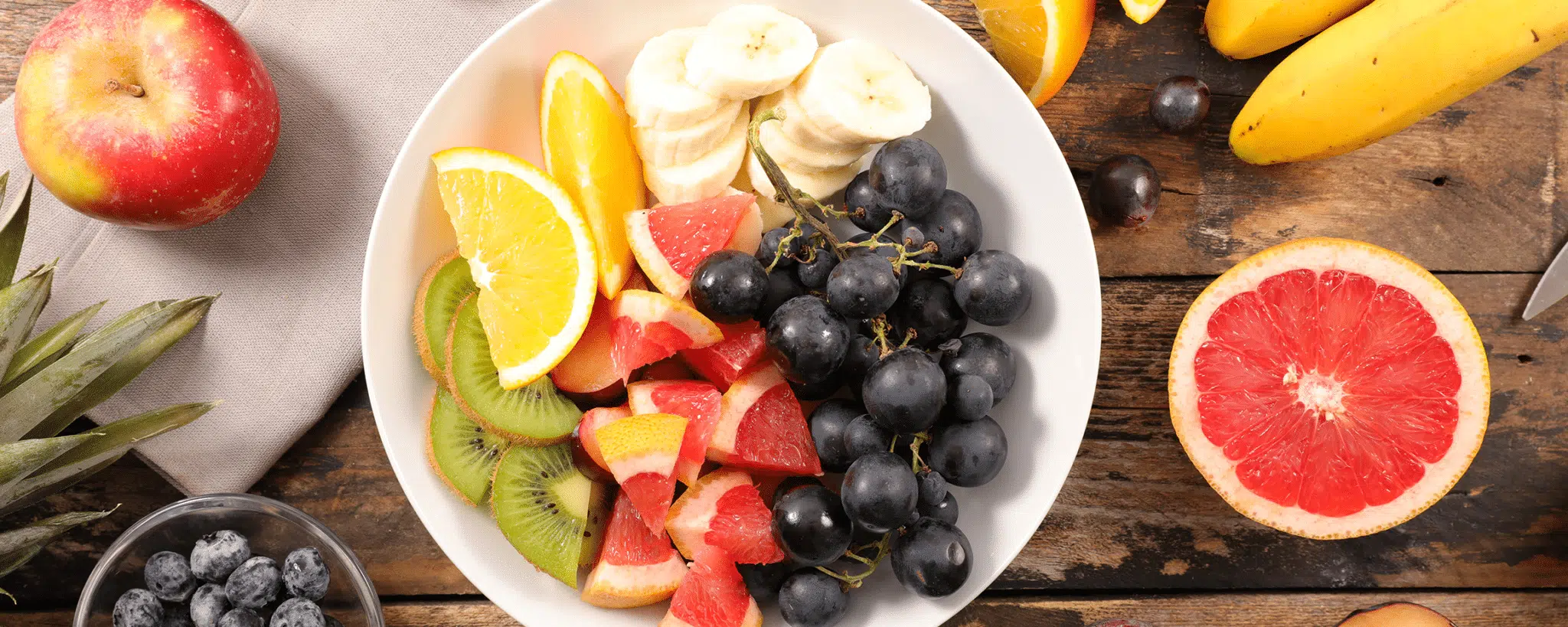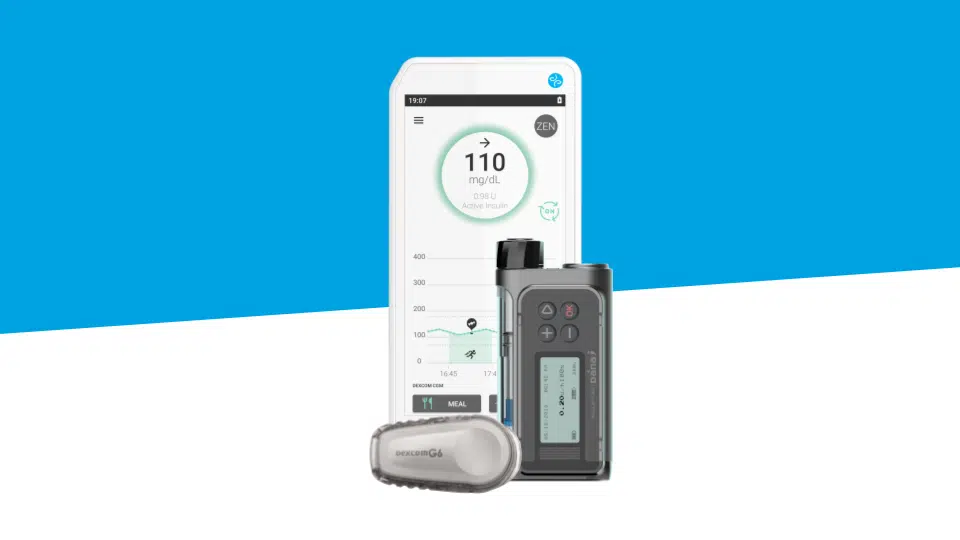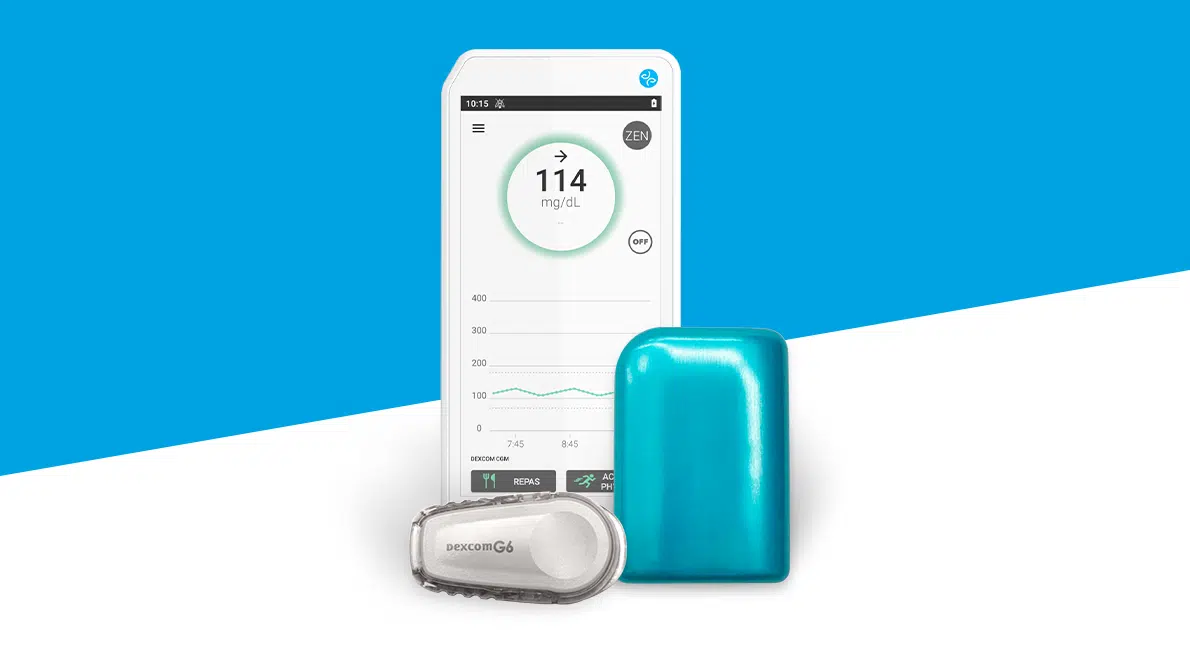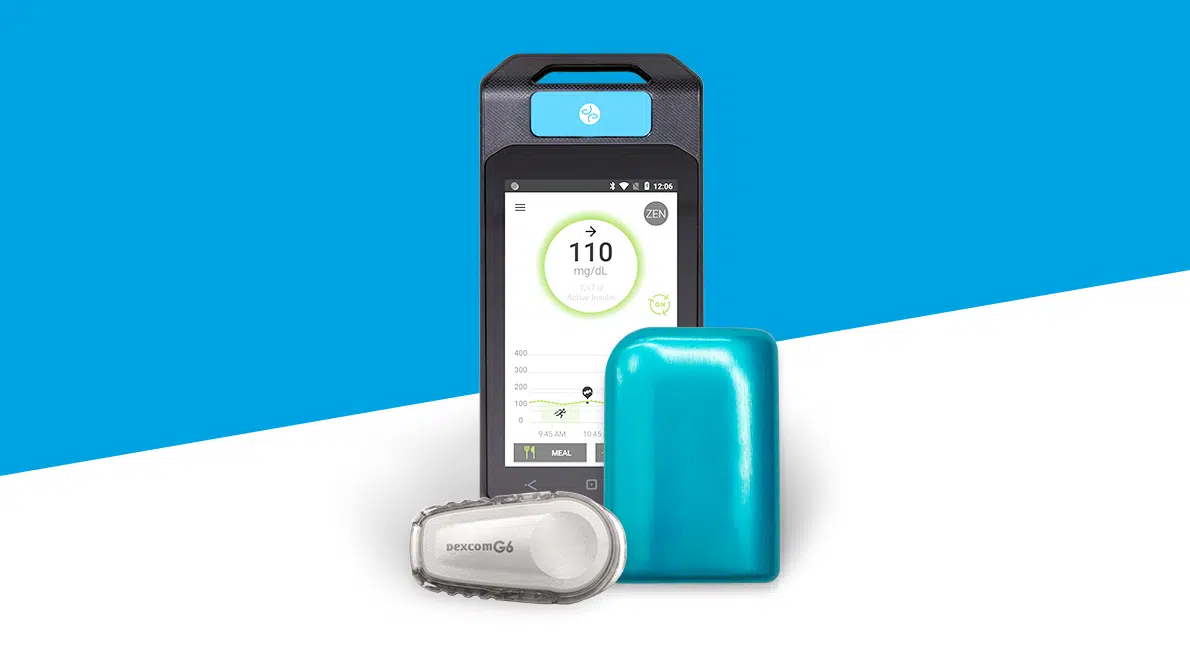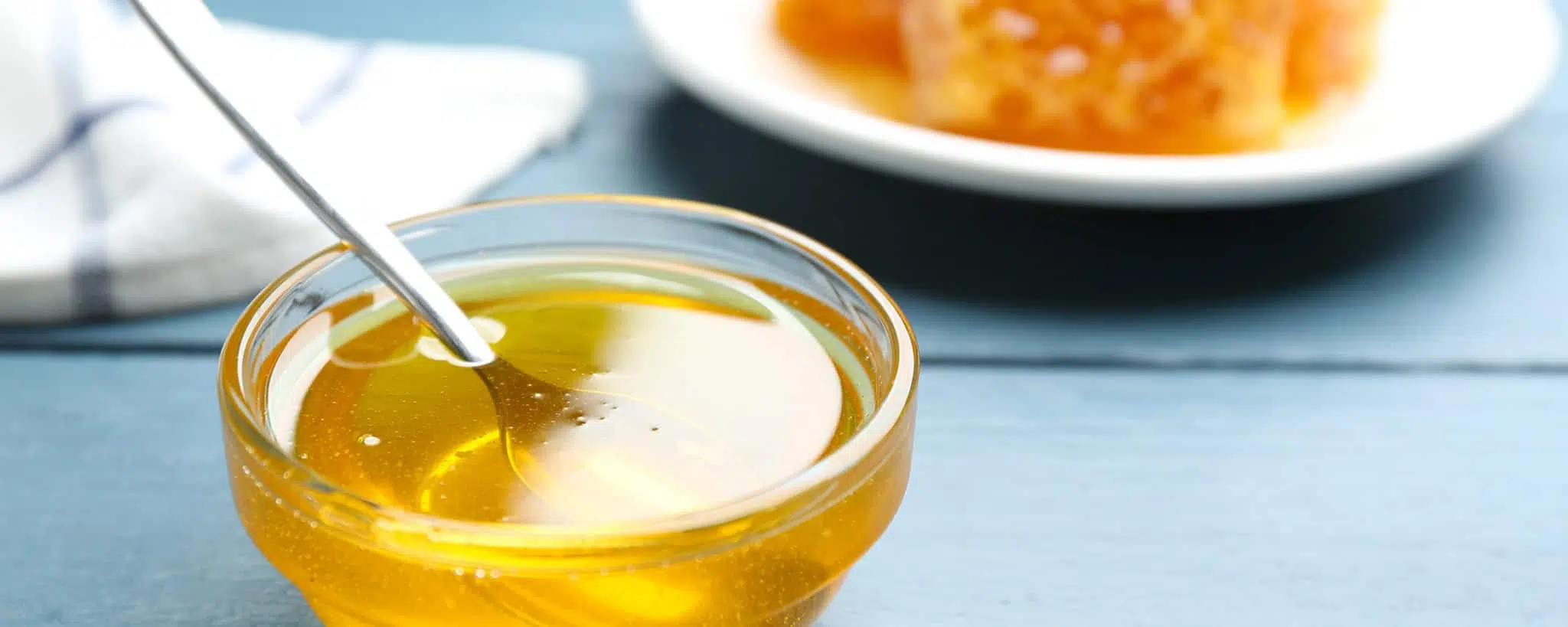
Sugar And Diabetes: Natural Substitutes
When it comes to food, sugar is often the subject of regular debates. When we talk about “sugar”, we usually think of white sugar first. Its nutritional values are far from great: 99.6 g of carbohydrates and 400 kcal per 100 g, as well as a hypoglycemic index of 70; it could definitely be better! Sugar doesn’t provide any nutritional benefits for your health. That said, it adds flavor, and we usually enjoy it!
However it’s used, it’s advised to consume it in moderation, to limit its harmful consequences as much as possible (addiction, cardiovascular health issues, diabetes, high insulin sensitivity, etc.), whether you are living with diabetes or not.
Luckily, whether you are living with diabetes or just want to limit your white sugar intake while continuing to enjoy yourself, there’s a whole load of sugar substitutes out there. Plus, guess what? They’re natural! We’ve put together a list for you.
The Most Popular: Honey
There are so many varieties: flower, acacia, sweet chestnut, lavender, etc. Honey has been made around the entire world for centuries. Beyond a simple food, it has long been considered to be a real remedy, particularly when applied to wounds.
To protect its origins and trade, honey is granted AOP [protected designation of origin] labels in France, as well as IGP labels [protected geographical indication].
Depending on the variety, honey mainly contains three types of sugar, in varying quantities: saccharine, glucose, and fructose.
On average, there’s 75-80 g of carbohydrates per 100 g. Its glycemic index also varies, but averages at around 55. Its average calorie count is 316 kcal per 100 g. These values obviously don’t cover its numerous virtues, hailed as being “therapeutic”, such as its antioxidant, antiseptic, and healing properties, etc.
To begin with, you can start by replacing white sugar with one or two spoonfuls of your favorite variety of honey. For example, it’s a real treat stirred into applesauce!
So, Do You Call It “Agave Syrup” Or “Agave Nectar”?
In reality, both terms are correct! This natural sugar alternative comes from the agave plant, mostly found in Mexico and South Africa. Compared to honey, it has a less sticky texture and a milder flavor.
Agave nectar contains mostly fructose, and around 76 g of carbohydrates per 100 g. It has a glycemic index of just 15. It would be a shame to have to deny yourself treats, especially when you are living with diabetes!
Why not try adding a few drops in cold drinks, such as iced tea, fruit juice or even cocktails to treat your taste buds!
Maple Syrup: Let’s Take A Quick Little Trip To Quebec!
Sometimes called “maple water”, it comes from maple sap, mostly collected in the forests of Quebec. Its appearance changes depending on the season it’s harvested in (most sap is collected in spring). This explains why you’ll find golden, amber, dark and even very dark maple syrups, with tastes varying from relatively delicate to stronger flavors
When it comes to producing and marketing maple syrup, the specifications are pretty strict: no additives or colorants allowed.
Between its antioxidant properties and its concentration in essential minerals (magnesium, calcium, potassium, iron, zinc, and manganese), the benefits of maple syrup are no secret. On average, it has a nutritional value of 67 g of carbohydrates and 260 kcal per 100 g (may vary depending on the type of maple syrup). It has a glycemic index of 65.
Sometimes, you just can’t beat the classic combination of pancakes with maple syrup.
Coconut Syrup: Keeping It Sweet With A Tropical Twist
As you can probably guess from its name, coconut syrup is made from the sap of coconut tree flowers. It’s mainly grown in South America and in tropical Pacific regions.
Plus, the UN has classed it as being the “most sustainable” form of sugar, as it’s environmentally friendly. Growing coconut trees doesn’t require much water or human intervention, and it isn’t chemically modified during its production process.
Coconut sugar is acclaimed for its rich Vitamin C and B content, and because it contains minerals such as magnesium, iron, and zinc. As if that wasn’t already enough to win you over, it’s also rich in antioxidants.
It has a low glycemic index (between 25 and 35), it contains 76 g of carbohydrates and 390 kcal per 100 g.
Wondering how you can use it in your day-to-day eating and drinking? It can be added to tea and coffee, or used in pastries and cakes, instead of white sugar (at a 1:1 substitution ratio). You’ll even detect caramel tones in its flavor. So, does that sound good to you?
Rice Syrup: Original? Yes! Natural? Yes! Although, It’s Not Light…
Rice syrup is made by fermenting brown rice grains. In terms of composition, it’s pretty similar to white sugar. Its main difference lies in the fact that this product isn’t refined much at all.
It contains 96 g of carbohydrates per 100 g, and its glycemic index is very high, nearing 95. On average, it contains around 316 kcal per 100 g.
It’s not all bad news… It also contains mineral elements such as potassium and magnesium.
Used in some pastries, or in ice creams or yoghurt, it adds a certain smoothness, almost creaminess.
Xylitol: Does Its Name Make You Think Of A Chemical Product? Think Again…
It’s a sugar substitute made from white birch sap, which is where its other name, “birch sugar,” comes from. It’s considered to be a natural product and is sourced in Europe, among other regions. Its sweetening power is similar to that of white sugar, and it can also increase when cooked.
Xylitol contains 71 g of carbohydrates and 261 kcal per 100 g. Its glycemic index is just 7! Known for its antibacterial properties, it’s recommended for dental and oral hygiene, or for treating digestive issues.
Xylitol can be used in pastries or cakes, or even for enhancing tea, coffee, or yoghurt, without much difference in taste from white sugar.
Rapadura Puts Latin America In The Spotlight
Rapadura is a non-crystallized cane sugar sourced mainly from Paraguay and Brazil. It has relatively strong sweetening capacities. It’s marketed in Europe through fair trade systems and boasts one of the shortest and most transparent supply chains around.
Rapadura contains 95 g of carbohydrates and 380 kcal per 100 g, with a glycemic index of 70.
It offers tones of licorice, caramel, and vanilla; in other words, it is extremely well-suited to baking.
A Snapshot Of Sugar Substitutes
The sugar substitutes below are, for the large majority, alternatives to white sugar, with lower carbohydrate and calorie content, and with a lower glycemic index. They’re all of natural origin, little refined and, with the exception of honey, vegan.
| Per 100 g | Carbohydrates (g) | GI | Calories (kcal) |
| White sugar | 99.6 | 70 | 400 |
| Honey | 75-80 | 55 | 316 |
| Agave syrup | 76 | 15 | 310 |
| Maple syrup | 67 | 65 | 260 |
| Coconut syrup | 76 | 25-35 | 390 |
| Rice syrup | 96 | 95 | 316 |
| Xylitol | 71 | 7 | 261 |
| Rapadura | 95 | 70 | 380 |
You get the idea – there are tons of sugar substitutes out there! All you have to do is choose which one suits your tastes and uses best!
That said, we do recommend paying attention to the origins of all these products. There is a huge market for sugar substitutes, and some can be slightly processed (cut with water, or even with white sugar, etc.). So, opt for short supply chain options wherever possible!
In Practice
Did you know that some professionals have made sugar substitutes their specialty, and distinguish between the ones they offer?
In France, the Parisian patisserie “Les Belles Envies” is reinventing patisserie classics by reducing their glycemic indices (GI), meaning that they have a low impact on blood sugar levels. How’s that even possible? Well, namely through replacing white sugar with coconut sugar and maltitol, a sugar made from cereals, and also through using low-GI flours, such as lupin flour, coconut flour, or even T80 50/50 wheat flour. Desserts, chocolates, cookies… It’s paradise for any sweet-toothed foodies living with diabetes.
In Rome, the “La Dolce Vita” ice cream shop makes ice cream using traditional methods, free from colorants and additives, some of which are sugar-free and made with soy.
In New-York, on top of its gluten-free concept, “Sans Bakery” offers cakes made with bananas and zucchinis as sugar alternatives. You can treat yourself without feeling guilty about the calories!
The concept of the “Celicioso” restaurants in Spain (Madrid, Marbella, Barcelona) focuses on serving gluten-free and healthy dishes. For them, the concept of “healthy” means no-added-sugar dishes and desserts, which only use healthy products.
In short, when you want to watch your sugar consumption to reduce its impact on your health, and particularly on your blood sugar levels when you’re living with diabetes, there are plenty of alternatives available.
It’s easy to get ahold of sugar substitutes, and they’re pretty simple to combine; you simply need to choose which ones!
Enjoy!
Sources
- https://fr.wikipedia.org/
- https://www.mgc-prevention.fr/les-atouts-sante-du-miel/#:~:text=Le%20miel%20est%20compos%C3%A9%20essentiellement,le%20glucose%20et%20le%20fructose.&text=L’apport%20%C3%A9nerg%C3%A9tique%20du%20miel,400%20kcal%20pour%20100%20g
- https://www.apiculture.net/blog/les-bienfaits-du-miel-sante-n25
- https://www.naturaforce.com/se-desintoxiquer-du-sucre/alternatives-au-sucre/sirop-dagave/
- https://erableduquebec.ca/produits/sirop-derable/
- https://www.passeportsante.net/fr/Nutrition/EncyclopedieAliments/Fiche.aspx?doc=sirop_erable_nu
- https://www.funkyveggie.fr/2019/11/13/bienfaits-sucre-de-coco/#:~:text=Le%20sucre%20de%20coco%20est%20riche%20en%20vitamines%20et%20min%C3%A9raux&text=Le%20sucre%20de%20coco%20d%C3%A9tient,fait%20un%20alli%C3%A9%20nutritionnel%20incontournable
- https://www.greenweez.com/magazine/10-choses-a-savoir-sur-le-sucre-de-fleur-de-coco-12069/
- https://www.naturaforce.com/se-desintoxiquer-du-sucre/alternatives-au-sucre/sucre-de-coco/#:~:text=Le%20sucre%20de%20coco%20est%20un%20produit%20assez%20calorique%2C%20puisqu,coco%20comprend%20des%20calories%20pleines
- http://www.cultures-sucre.com/faqs/combien-de-calories-dans-un-morceau-de-sucre/#:~:text=Un%20peu%20de%20math%C3%A9matiques%20%3A%20on,g%20fournira%2031%2C6%20kCal
- https://www.doctissimo.fr/nutrition/diaporamas/alternatives-sucre/le-sirop-de-riz
- https://www.papillesetpupilles.fr/2018/06/sirop-de-riz.html/
- https://www.toutvert.fr/sirop-de-riz-infos/
- https://www.fatsecret.fr/calories-nutrition/
- https://www.femmeactuelle.fr/sante/alimentation-equilibree/xylitol-ce-quil-faut-savoir-sur-ce-sucrant-issu-de-lecorce-de-bouleau-2103333
- https://blog.lafourche.fr/rapadura-sucre-complet
- https://www.passeportsante.net/fr/Actualites/Dossiers/DossierComplexe.aspx?doc=alternatives_au_sucre_page1_4_do#:~:text=Extrait%20d’une%20plante%2C%20l,%C3%A9viter%20les%20pics%20d’insuline


